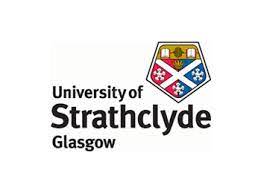University of Strathclyde: Two international quantum networks to be led at Strathclyde
The University of Strathclyde is to lead two international quantum technology networks, following successful bids for funding.
The funding, worth a total in the region of £1 million, has been announced by the Engineering and Physical Sciences Research Council, part of UK Research and Innovation, following its Quantum Technology Call for International Networks.
The networks are:
The International Network in Space Quantum Technologies, which will tackle the challenges of taking terrestrial quantum technologies into space
The International Network for Microfabrication of Atomic Quantum Sensors, which will create a framework for collaboration on the next generation of fully-integrated atomic sensors.
The Space Quantum Technologies network is to receive £480,000 and has 37 members in 13 countries, including four industrial partners, one of which is the Strathclyde-hosted Fraunhofer Centre for Applied Photonics. The Microfabrication of Atomic Quantum Sensors network is to receive £480,000; it includes leading international groups in 13 institutions and three UK industrial partners.
The awards reflect Strathclyde’s status as an international leader in Quantum Technology. The University is the only academic institution that has been a partner in all four EPSRC funded Quantum Technology Hubs in both phases of funding, in: Sensing and Timing; Quantum Enhanced Imaging; Quantum Computing and Simulation, and Quantum Communications Technologies.
The Space Quantum Technologies network will develop satellite-enabled quantum-secure communication and Earth observation, with applications in combating climate change, space weather forecasting, satellite navigation and extra-terrestrial surveying.
Dr Daniel Oi, Senior Lecturer in Strathclyde’s Department of Physics, is leading the network with his departmental colleague, Dr Paul Griffin. Dr Oi said: “This is an important international initiative which will strengthen the sense of communality in the international quantum community, at Strathclyde, and among our partners.
“Taking quantum technologies into space is extremely difficult and will require concerted international effort to realise. There are considerable challenges, such as the requirement to survive launch, the radiation environment in space, autonomous and remote operation and the limited size, weight and power constraints of satellites. However, the rewards will be truly transformative on a global scale.
“The long lines of sight in the space domain will eventually enable the quantum internet and the vantage point afforded from orbit is valuable for quantum enhanced remote sensing and Earth observation. Space-based quantum clocks allow for more accurate timing distribution and synchronisation, enhancing the performance of global navigation satellite systems.
“There’s a need to bring together the active but widespread community working on space quantum technologies, to combine their collective knowledge and experience and develop and innovate new ideas and concepts.”
The Network for Microfabrication of Atomic Quantum Sensors will develop the next generation of miniaturised quantum sensors, with potential applications in healthcare, navigation, finance, communication and security.
RAEng (Royal Academy of Engineering) Research Fellow Dr James McGilligan, of Strathclyde’s Department of Physics, is leading the network, with his departmental colleague, Professor Erling Riis.
Dr McGilligan said: “This is a fantastic opportunity for Strathclyde to be in a quantum technologies leadership role and we will be working with some of the key global individuals and laboratories in this field.
“The deployment, and therefore the application range, of atomic sensors has been largely limited by the scalability of the systems’ constituent parts.
“Institutions around the world are pursuing new ways to enable innovation and tackle this issue through the technological development of next-generation quantum sensors. Often this will require the integration of a diverse range of technology platforms with a vast potential for further advances through collaboration and an open exchange of ideas.
“The network will pursue opportunities where recent advances in component technology have provided important steps forward, but where the realisation of fully integrated, microfabricated devices and sensors has remained elusive. This is partly due to the global spread of component developments and the present lack of an appropriate international network forum for bringing together ideas and technology through, for example, regular meetings and researcher exchanges.”
In addition, Strathclyde Physics researchers are members of two other networks. Professor Andrew Daley is a co-investigator in the International Quantum Tensor Network, led overall by University College London, which is focused on new ways to simulate and to programme quantum computers. Professor John Jeffers and Dr Lucia Caspani are members of the International Network on Acausal Quantum Technology, led by the University of Glasgow.
A Quantum Technology Cluster is embedded in the Glasgow City Innovation District, an initiative driven by Strathclyde along with Glasgow City Council, Scottish Enterprise, Entrepreneurial Scotland and Glasgow Chamber of Commerce. It is envisaged as a global place for quantum industrialisation, attracting companies to co-locate, accelerate growth, improve productivity and access world-class research technology and talent at Strathclyde.

